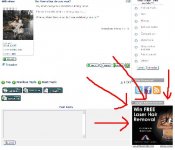osprey
Active member
- Joined
- Apr 1, 2009
- Messages
- 3,031
Thanks for that "image" boss , first thing in the morning. Wax does have it's place in tying , but it's not on yer *** , if you know , for instance , you are going to be fishing water that is fast and you need as much floatation/waterproofing as possible waxing will surely keep you from waterlogging for awhile longer....also what aFish says about natural fur dubbing is the same for me , a little wax just seems to help you make it "behave" , makes certain materials more manageable , those are the two things that come to mind but a question i've had for awhile is when you buy tying thread that says pre-waxed , like Danville , why doesn't it look like it waxed?




